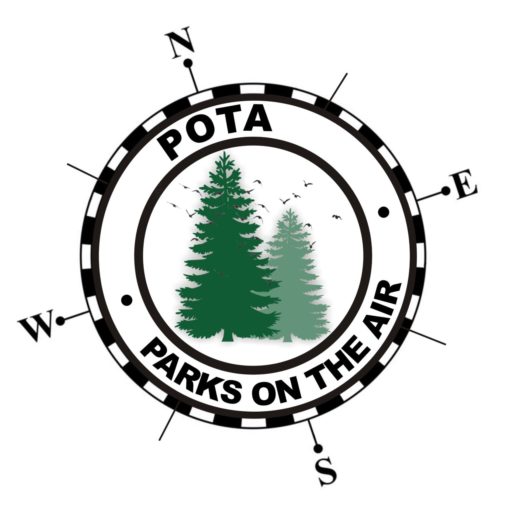I’ve been wanting to try it for months, but this week I finally decided to give POTA (Parks on the Air) a try and decided to share a few thoughts with you about how it all works.
In a nutshell, POTA is a lot like Field Day; you get out in the great outdoors and operate remotely. This is very emergency-communications oriented so if you like EMCOMM stuff or disaster preparedness, you’ll love this. But there’s a lot more and there are some very exciting differences. First, you can’t work just anywhere like you can on Field Day, you must work from within the boundaries of a park that is on the POTA list. There aren’t many rules, but that’s a firm one. Working from inside your vehicle is okay, but you must actually be inside the park.
In the Lower Mainland, there are probably about a hundred parks that are designated, so there’s no shortage of places to go. I chose Allco Park in Maple Ridge, which the POTA folks have designated as park number VE-3180 and coincidentally, was also the site of our club’s Field Day two years ago. Allco Park has never previously been “activated” on POTA. A POTA member must get at least 10 logged QSO’s to move the park from the inactive state to “activated”. Because it was “inactive” it likely means that nobody has ever attempted to do POTA from Allco Park.
By the way, I’ll mention here that POTA is actually far more organized than I had expected. There are many volunteers and it appears to be a well-established and organized entity. Their website is superb and has some great “getting started” guides and checklists. Another difference from Field Day is that you can do POTA any day, not just once a year. That obviously requires considerable organization by the volunteers and they seem to do a superb job of it.
Next, and this is the best part of POTA: Hundreds of other amateur operators are eagerly hunting YOU and are tuning to your frequency in pile-ups, scrambling to contact you. How does that happen? When you’re operating you “spot” yourself on the POTA website. Others that have heard you will also be “spotting” you or updating your spot on the website. The site lists your frequency, call-sign and park, so hunters can easily find you on the air. A screenshot of the spot page from pota.us is shown immediately below:
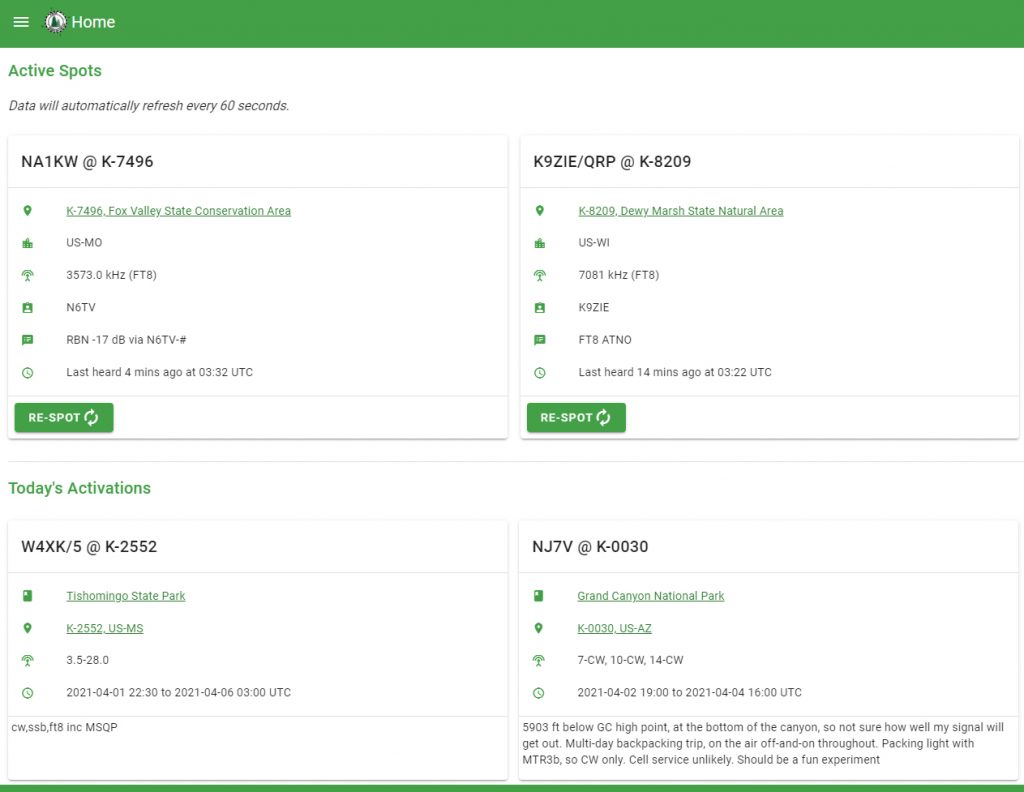
POTA has an entire awards scheme for both hunters and for activators. “Activating a park” is the phrase that POTA uses to simply mean those that are braving the labours of getting out and working portable from a park. Everyone else looking to talk to those in parks are called hunters. Both compete for awards.
But it’s not just a game of the most contacts, many hunters are also trying to collect all the parks as if they were Pokemon cards, kind of a like a ‘worked all states’ award for parks. Many of the parks in the Lower Mainland have never been activated, so when working from them, you are a hot commodity for those that want a new park or perhaps even that particular park. And even if it was a popular park that has been worked many times, nobody will turn up their nose as there are still points that come from working you, even if they worked you yesterday at that same park. With only a handful of parks “activated” (on the air) at any given time, you really are highly sought after by the hundreds if not thousands of hunters out there.
Most of that wasn’t known to me when I set out to do my first activation. Because it was a weekday, I thought that most people would be at work and with the bands being poor, it would be a slow day. Was I wrong! The POTA guide gave tips on how to control pileups and they weren’t joking. There were many pileups and the action was pretty much non-stop. I logged over 100 contacts in just a few hours, all on 20m and low power. My antenna was only an inexpensive 20 meter wire dipole I hoisted into a tree. I had contacts pretty much everywhere around North America in just a few hours. The furthest corners of Alaska, Hawaii, Puerto Rico and the Azores. Pretty incredible for a day in which propagation was ho-hum.
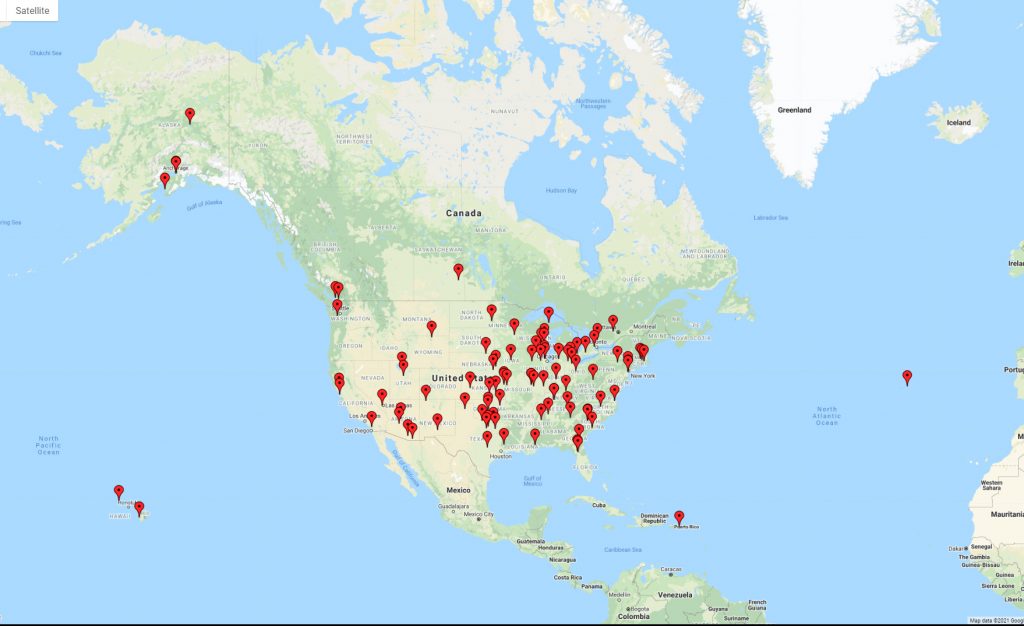
Looking at my contacts and noticing that most states were represented, it occurred to me that with a dipole and low power using phone, you could earn your “worked all states” in a single day! Incredible.
To say I was blown away by how fast the action was happening is an understatement. This was all the frenzy of Field Day but on a weekday in poor conditions! A few days later, I returned to the park to try it again thinking maybe the first day was just an oddball and it wouldn’t repeat. Wrong again. The second day, I’d say the bands were just as bad, if not worse. Lots of posts on social media about how bad the bands were, including 20m. Using the same wire in a tree, I made even more contacts, 115 total this time, also in just a few hours. I had to leave early otherwise I think I could have topped 200 contacts before needing a break.
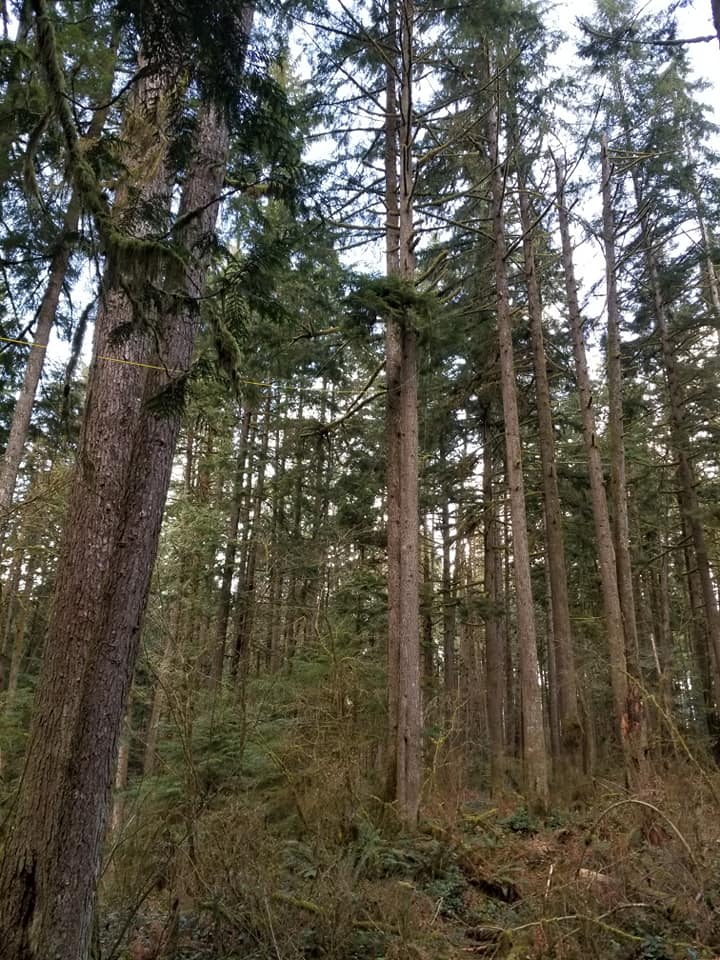 A bit hard to see, but that’s a 20m dipole up a tree, deep in the forest.
A bit hard to see, but that’s a 20m dipole up a tree, deep in the forest.
It’s fortunate that working from inside your car is permitted because it rained on the second day, so I sat dry and cozy while operating my portable rig (Yaesu 991a and MFJ tuner). But like the first day, the contacts were coming many at a time, often in pile-ups.
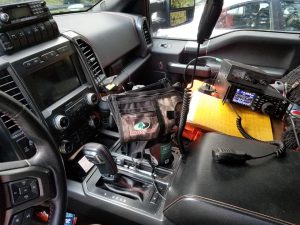
Another great thing about POTA is that the hunter doesn’t need to log anything. The activator does the logging. For many hunters, that’s a big plus. All the hunter does is make contact, exchange a signal report and they’re done. At the end of the day, the activator emails the ADIF file to the POTA coordinator to officially log all the QSOs. Results are reportedly updated to the POTA stats page within a couple of days but in reality, it seems like only a couple of hours and they’re online, they are that efficient. Additional glory goes to those that work “Park to Park” meaning one park activator hunts another and they exchange park numbers during their QSO. That happened many times during my activations this week, so it’s apparent that Park to Park contacts are desirable.
POTA also has a very, very active group on Facebook. Most activators post photos of their activations and their gear/setup. Sometimes the photos are posted prior to or during the activation, sometimes later. I’ll say that it adds a bit more enjoyment to the experience to be able to see that. Particularly when your QSO was with someone sitting outside a tent, deep in a state park. I liked POTA so much, I went for a third outing the same week and worked well over 100 contacts again in short order. Six days and about 350 phone contacts is a new record for me, and easily attainable with POTA.
If you want to learn more about POTA, please visit their wonderful website at: parksontheair.com
On that site, you’ll find a video guide for activators, a downloadable guide, and even guides for those that prefer to stay at home and play the hunter role.
So, bottom line…. Is POTA worthwhile? Only if you want to make hundreds of contacts as quick as you can log them! I literally can’t wait to do it again. It might just be the most fun I’ve had on a radio.
73 de VA7DBJ.
